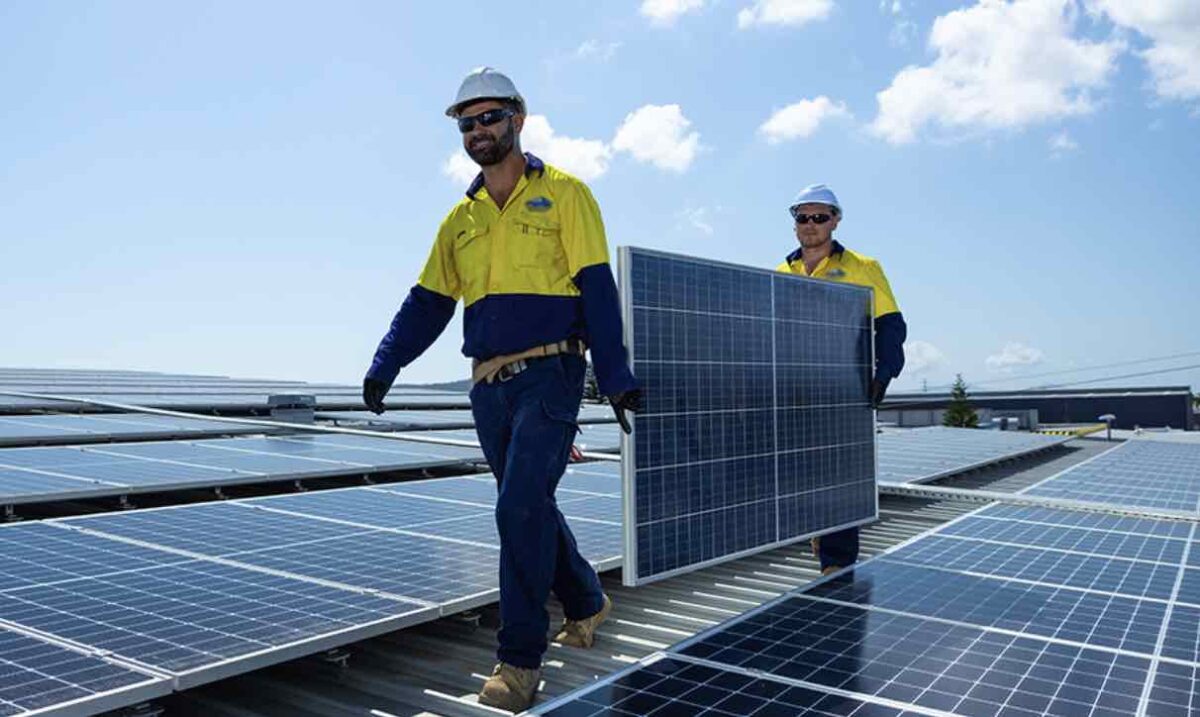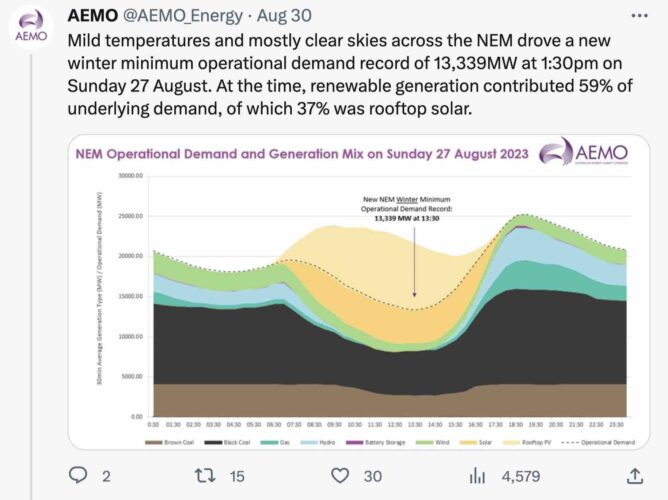Amid all the song and dance over the market operator’s 10-year reliability outlook, and the revelations of the stunning incompetence of the federal government owned Snowy Hydro, it’s not surprising that the march of rooftop solar barely got a mention.
On Wednesday, the Australian Energy Market Operator revealed two fascinating graphs that underline not just the pace of the switch to renewables, but also how it fundamentally changes the nature of the grid and the business of energy.
The first graph pointed to a new record for “minimum demand” in the main grid in winter – just 13.4GW at 1.30pm last Sunday – driven down by the rapidly expanding influence of rooftop solar which accounted for 37 per cent of all generation.
A second graph pointed to even more dramatic numbers – a day earlier – in the country’s second biggest grid, in Western Australia, where rooftop solar pushed minimum demand to a new record low of 831MW, and accounted for a stunning 67 per cent of total generation.
It’s important to recognise the significance of these numbers. Households might think that throwing 5kW of solar PV on the roof might not change much, apart from their own bills, but together they are reshaping the grid.
The consumer has become a powerful player in the market, and is probably the biggest factor in chasing coal out of the grid. And it’s just the start: As they add batteries, electric vehicles, and kick gas out of the home with electrification they are reshaping not just the grid and the utility business, but also the gas industry.
The problem that is starting to present itself for AEMO is lack of what it calls “orchestration”, the ability to marshall these consumer resources, or distributed energy, into an asset that can be used to boost reliability in the grid – not just in addressing minimum demand, but also flattening the peaks in the summer heat.
The annual Electricity Statement of Opportunities inevitably leads to a lot of blackout headlines from mainstream media who choose to deliberately misread and misrepresent its content, but it includes some interesting insight into some of the issues that AEMO is grappling with.
The slow take-up of households in “virtual power plants” has caused AEMO to downgrade this resource as a potential solution to fill reliability gaps. That is perhaps not surprising given the rooftop solar push is a response to soaring bills, a desire for some energy independence and a suspicion of energy utilities.
But AEMO makes it clear that if these resources – rooftop solar, battery storage, electric vehicles and other consumer loads – can be “orchestrated”, then the reliability forecast will be improved considerably and less utility scale assets – big batteries, pumped hydro, and peaking gas – will be needed.
This is especially the case in South Australia, the grid with the most wind and solar (more than 70 per cent over the past year), and where rooftop solar generation can sometimes match all demand on the local network.
AEMO is looking closely at CER (consumer energy resources) as it prepares the next iteration of its 30-year blueprint, the Integrated System Plan. To underline the significance of this, by 2050, the amount of rooftop solar could have jumped from 15GW now to up to 120GW.
The ability to have some sort of control over this resource – not to mention the batteries and the electric vehicles – seems to be essential, and will be critical in AEMO’s ability to manage a grid at or close to 100 per cent renewables.
Various solutions are emerging, such as dynamic export limits that have been introduced in South Australia and Western Australia, and the growth of virtual power plants. Community and neighbourhood batteries could also play a role.
But if they can’t reach satisfactory levels of orchestration, then it could be difficult. Which is kind of ironic given that consumers are choosing to go their own way, and the utilities, networks and market operators must now try to entice them back to allow their assets to be pooled for a common good.
That is going to take some effort, given the history of utilities and consumers is not exactly one of trust and full engagement. It’s why some utilities are trying hard to change their spots. It’s why they say they are so “customer focused” – the consumer has something they need, and it’s not just their money.
And that probably speaks to why some are very keen to get out of coal as soon as they can. It’s going to take some strategic thinking, and marketing prowess, some strong credentials, and probably more carrots than sticks.











